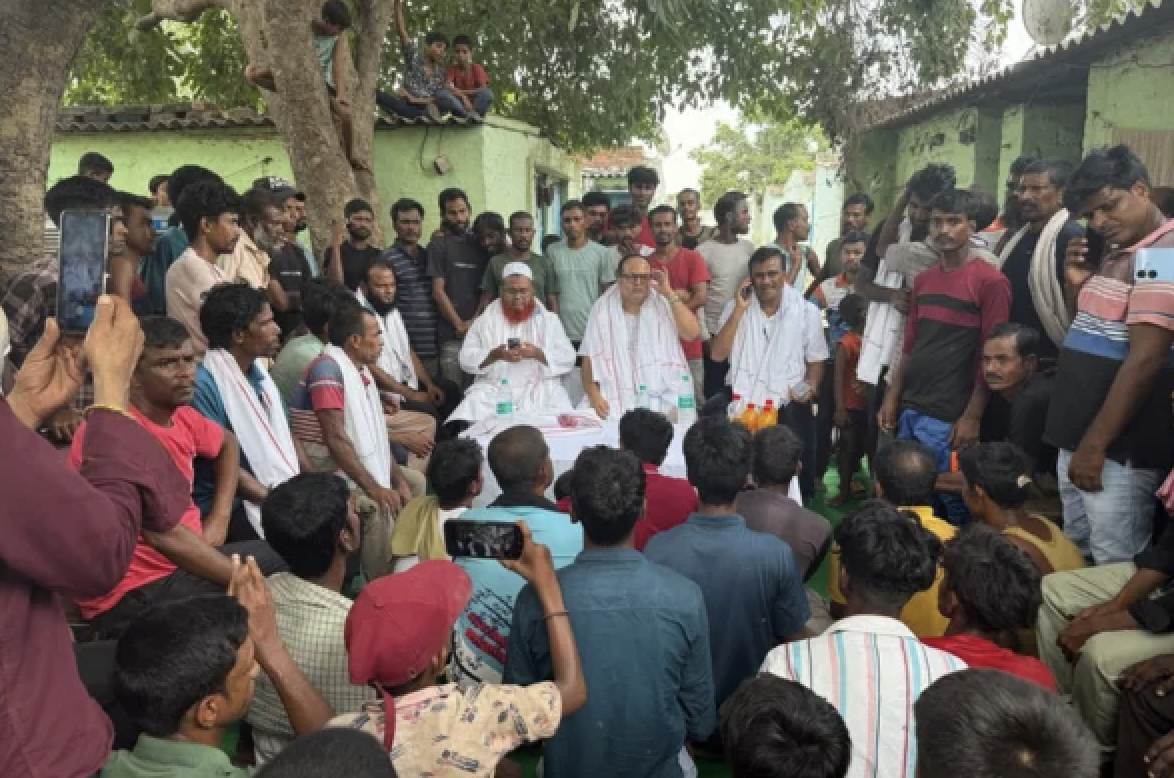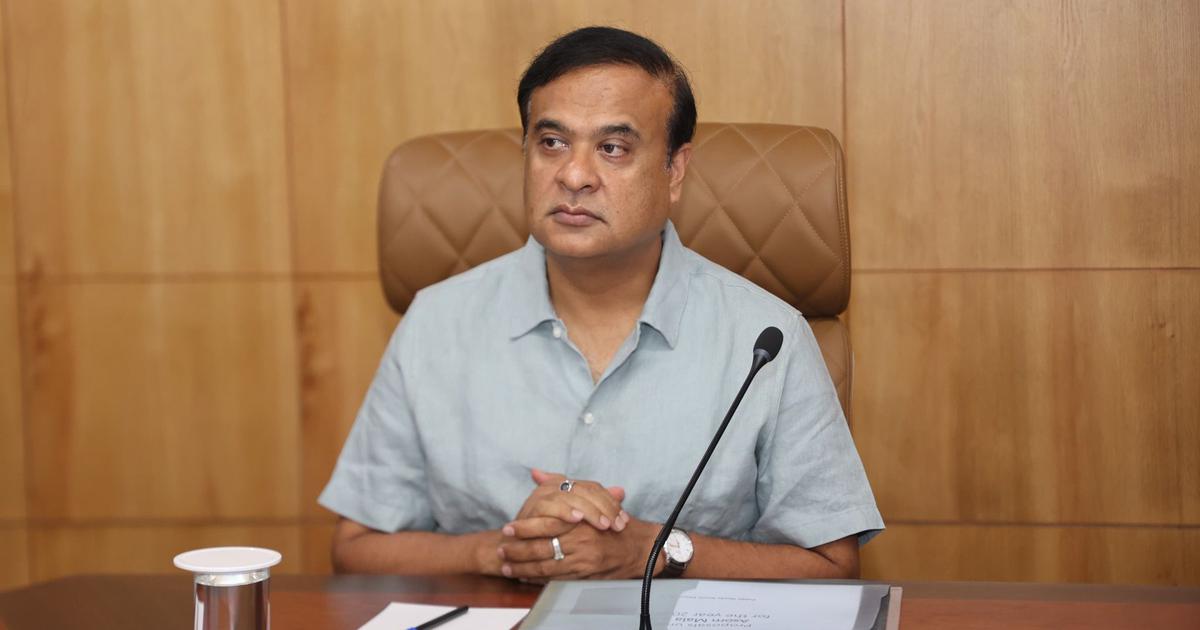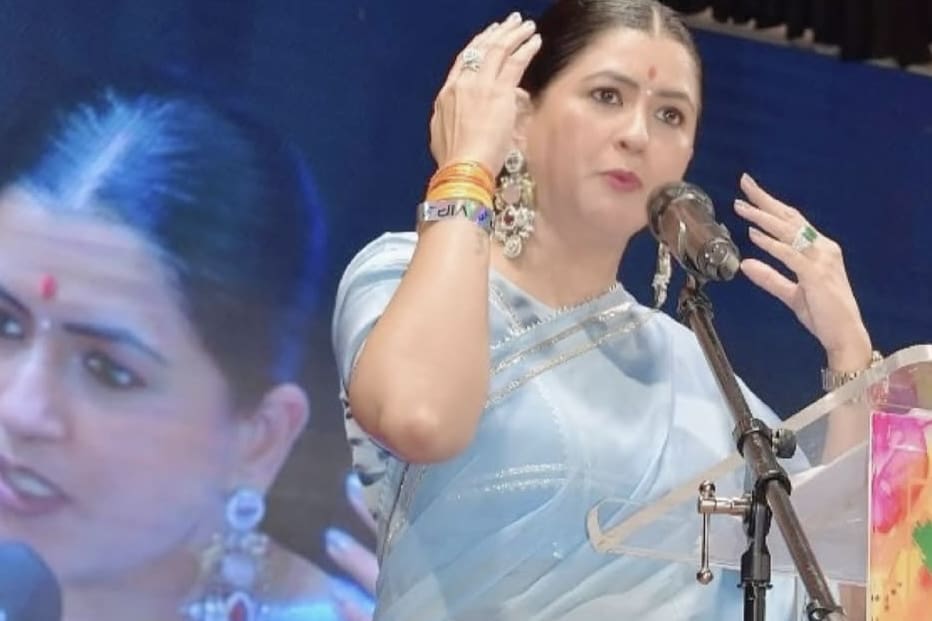
Near the historic Charminar in Hyderabad, Telangana, ahead of Ramzan on May 11. Experts feel that the new policy is based on the myth of Muslim population explosion. Photo: Nagara Gopal
By Ziya Us Salam
In response to a question about his government’s relief measures for the victims of the communal carnage in Gujarat in 2002, which claimed nearly a thousand lives, Chief Minister Narendra Modi remarked callously: “What should I do? Run relief camps for them? Do we want to have baby producing centres? Hum paanch, hamare pachees? (We five, ours 25?)” The implication was clear: every Muslim man has four wives and 25 children.
The mindset has not changed, and the propagation of half-truths and sordid lies by his Sangh Parivar colleagues have not stopped on his assuming office as Prime Minister. The myth of Muslim population explosion and the allegations of widespread polygamy among Muslims have persisted.
In 2017, Sakshi Maharaj, the Bharatiya Janata Party’s Member of Parliament from Unnao, said at a gathering in Meerut, Uttar Pradesh: “Those with four wives and 40 children are responsible for the population increase in the country. Hindus are not to blame for the increase in population.” His solution was for all Hindu women to “produce four children in order to protect the religion”.
In the game of numbers, Sakshi Maharaj felt, Muslims, who constituted 14.2 per cent of the population in the country, were poised to outnumber Hindus who constituted 79.8 per cent (Census 2011 figures). Surprisingly, many people have bought into this far-fetched theory. It is being peddled all over again in Uttar Pradesh, ostensibly to control population.
Sakshi Maharaj was not the only one to instil fear in the minds of gullible people. Pravin Togadia, the hardline Hindutva leader, had earlier advised Hindu men to “go home, worship your manhood”. Addressing a meeting in Jambusar in Bharuch district, Gujarat, in June 2016, Togadia exhorted: “Now, the population of Hindus will rise… say no to conversion and yes to ghar wapsi [reconversion]; say no to love jehad and yes to uniform civil code; say no to Bangladeshi Muslims… have more children in Hindu households.”
Mohan Bhagwat, the Sarsanghchalak of the Rashtriya Swayamsewak Sangh (RSS), recently made some positive noises with regard to Muslims, stating that Indian Muslims and Hindus shared the same DNA, but he struck a discordant note in 2016 when speaking about Muslim population growth. He remarked, “Which law says that the population of Hindus should not rise? What is stopping them when population of others is rising?”
Bhagwat was only reiterating what Dattatreya Hosabale, his colleague in the RSS, said in 2013: “Small-family norms are posing a big threat to Hindus. So, each family should have three children…. Blind adherence to family planning norms by a community won’t do any good to the country. It will cause a serious imbalance in the country.”
Concerted attempts
The Uttar Pradesh Population (Control, Stabilisation and Welfare) Bill, 2021, is yet another attempt to portray the Muslim community as being opposed to family planning and producing too many children in order to overtake the Hindu population in a few years. Soon after the first wave of COVID-19 subsided last year, a photograph of a large number of Muslim men offering prayers on a street went viral on Twitter. The caption sought to warn, “They’re the second-largest majority. When they become largest, you won’t find Hindus here. The country will become like Pakistan and Bangladesh. They’ll implement Sharia in place of [the] Constitution and become an Islamic country in no time.” The photograph was ultimately discovered to be from Bangladesh, but in the relentless effort to project the growing Muslim population, anything was deemed fit to provoke fear, hatred and resentment among the majority community.
Interestingly, while BJP Chief Ministers Adityanath and Himanta Biswa Sarma of Uttar Pradesh and Assam, respectively, are piloting population control policies, their own party members have been urging Hindus to have three or more children. The goal is to maintain the numerical advantage over Muslims. Alok Kumar, Vishwa Hindu Parishad’s acting president, even objected to the Uttar Pradesh Bill, stating that “the Bill can increase the imbalance between different communities”. His words echoed Hosabale’s eight years ago.
Attempt to hide failures
S.Y. Quraishi, former Election Commissioner and author of The Population Myth: Islam, Family Planning and Politics in India, said there has been a long-standing propaganda that Muslims will outnumber Hindus by 2035 or so and become the majority in India. He says: “It is not governed by facts but by prejudice. The fertility differential between Hindus and Muslims was never more than one child. So if a Hindu couple had three children, Muslims had four. Now, the differential has come down to less than half a child, 0.48 to be precise. Why this scaremongering?”
Says Quraishi: “The Bill appears fine insofar as it seeks to provide health services to all, including pregnant women, increased access to contraceptives, proper system for abortion, etc. However, these are just platitudes. The measures suggested do not need a new policy. Moreover, the timing is all wrong. The government has given itself a year’s time for implementation. By then another government would be in office as elections are only six months away. From the look of it, the Bill seems just another attempt at polarisation with an eye on elections.”
Quraishi feels that the new policy is based on the myth of Muslim population explosion even though the draft policy does not name any particular community. He says: “The Hindu right wing has always popularised this myth. In the election season, it can be a good diversionary tactic. Maybe, if we did not have photographs of bodies floating in the Ganga, and all the other COVID casualties, the draft policy would not have come about. It does seem to be an attempt to camouflage the multiple failures of the government.”
Records show that the Muslim population increased after Independence, but then the pace of growth slackened in subsequent years. In 1951, Muslims made up 9.8 per cent of the total population of the country. In Census 2011, it had risen to 14.2 per cent. In the corresponding period, the Hindu population fell from 84 to 79.8 per cent.
Figures also say that Muslims have the lowest level of family planning practice (45.3 per cent). Significantly, the Hindu community comes second with 54 per cent. Yet the Muslim community is adopting family planning now at a faster rate than the Hindu community. As a result, the gap in family planning between the communities is narrowing.
According to the 2011 Census, the Hindu population growth rate slowed from 19.92 per cent between 1991 and 2001 to 16.76 per cent between 2001 and 2011. Significantly, the Muslim population growth rate declined sharply, from 29.52 per cent to 24.6 per cent, in the same period. The Hindu population growth rate is expected to fall even further to 15.7 per cent in the next Census for the decade 2011-21. The Muslim population growth rate too is expected to fall to 18.2 per cent in the same period. With the growth rates of both Hindus and Muslims slowing, population growth in both communities is likely to stabilise to the replacement level of fertility (the level of fertility at which a population exactly replaces itself from one generation to the next) in the near future.
Interestingly, Uttar Pradesh’s population policy aims for a TFR (total fertility rate) of 2.1 by 2026, but it is likely to be achieved earlier, by 2025. Incidentally, a TFR of 2.1 is said to be ideal for replacement fertility; maintaining a stable population size takes a little longer. In Assam, which is also aggressively targeting the Muslim community for its supposed increase in population, the TFR has already fallen from 2.2 in 2015 to 1.9 in 2020-21, rendering cries of population explosion misplaced and redundant.
Quraishi debunks the myth of Muslim population explosion, saying: “According to the Hindu right wing, Muslims are very prolific, they are responsible for India’s population explosion. They believe if a Hindu has two kids, a Muslim has ten. It has never been the case. The difference was never more than one child. Now it has come down to less than half a child. Similarly, when any politician talks of ‘Hum paanch, hamare pachees’, it is forgotten that in India it is practically impossible for many men to have multiple wives. The sex ratio in the country is 1,000:922.
In other words, 78 men do not get to marry a woman in our country. When there is such a dearth of women in the normal course, how can you expect millions of Muslim men to have multiple wives? Factually, at 5.7 per cent, Muslims are the least polygamous; Hindus are next at 5.8 per cent. As for Modi’s remark, I have personally not seen a single Muslim man with four wives and 25 children. It is all farcical.”
During a visit to Kolkata in January 2020, the Nobel laureate Abhijit Banerjee, too, dismissed the idea of the minority community reproducing in order to overtake the majority. Observing that minorities in India and the United States are “actually minorities”, he said he did not feel there is “real fear there’s going to be a Muslim takeover of India”. The talk that “one hears at least from the fringes of the ruling party about the demography of the Muslim population…is really just a way to demonise a population”, he said.
“You could imagine a context when these are two equal groups, and you worry about the other group becoming too powerful. This is just not realistic here,” he added.
Muslims and family planning
Meanwhile, Muslims are taking to family planning in a big way. When Congress leader Sanjay Gandhi’s coercive vasectomy programme sent millions of Muslim men scurrying for cover in 1975, a Muslim cleric in Old Delhi advised the community to opt for voluntary family planning. He encouraged Muslims to adopt short-term contraceptives while ruling out vasectomy-tubectomy and abortion as family planning methods. While many conservative ulema criticised his fatwa, he based his argument on the teaching of the Quran, reminding the faithful that the book instructs those who do not have the means to marry to keep themselves chaste until the Lord finds a way out for them. He also did not consider al-azl or the method of withdrawal (coitus interruptus) to be un-Islamic. The permission for four wives, he clarified, was to rehabilitate widows and orphans. It was a permission rather than a licence.
The community appears to have taken the cleric’s word, which was criticised heavily in the late 1970s. According to the findings of the National Family Health Survey-3 (2005-06), 36.4 per cent of eligible Muslim couples used family planning methods. According to the next survey (2015-16), the percentage of Muslim couples using modern methods of contraception had risen to 37.9 per cent. This enthusiasm for contraceptive use is unprecedented since Independence.
However, as the Sachar Committee (to study the social, economic and educational condition of Muslims in India) pointed out, the community is still hindered by poverty, lack of education, and abysmal political representation. According to the 2020 Global Multidimensional Poverty Index (MPI), published by the United Nations Development Programme and the Oxford Poverty and Human Development Initiative, every third Muslim was poor on the basis of income, nutrition, health, education, living standards, and so on. Only 63.7 per cent of Muslim households had access to tap water. The size of a family is said to be directly linked to education; the higher one’s education and income, the smaller the family size.
Despite the odds, the Muslim middle class is leading the way. As Quraishi sums up, “Coercive methods never work in family planning. We have the example of China which once insisted on a single child per couple norm but is now permitting couples to have three children. The adoption of family planning has to be voluntary. For that more education, better employment opportunities are essential. How come all the votaries of Hindutva cry about a perceived Muslim population explosion but never talk of providing them with better access to education, jobs, etc.?”
This story first appeared on frontline.thehindu.com






